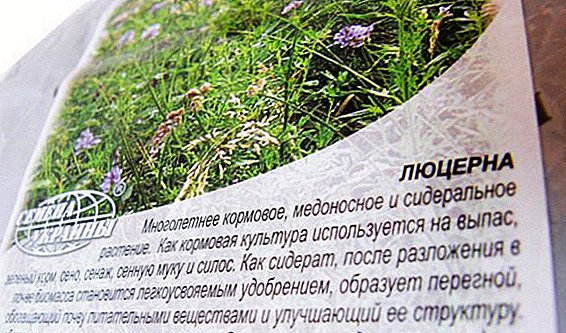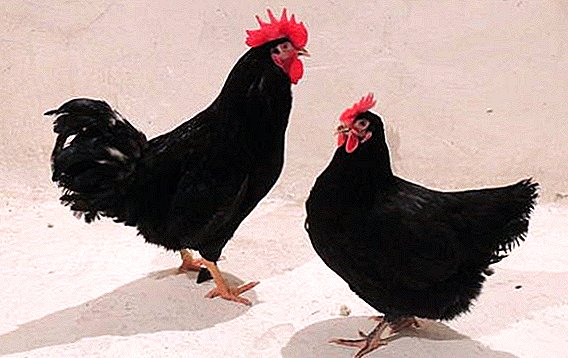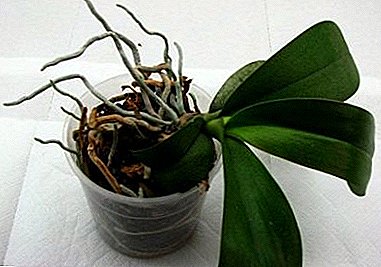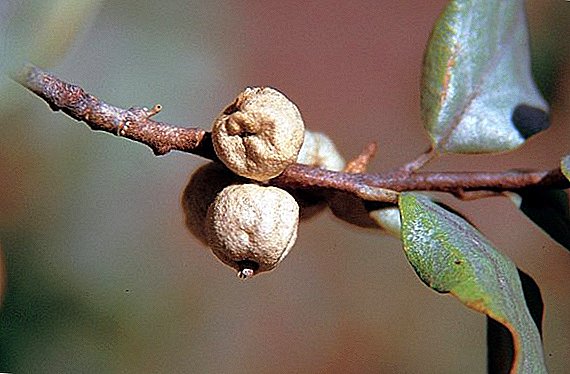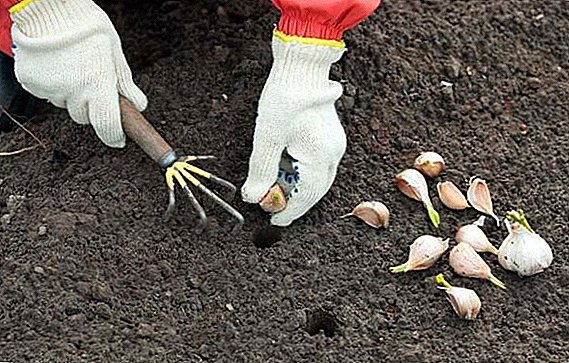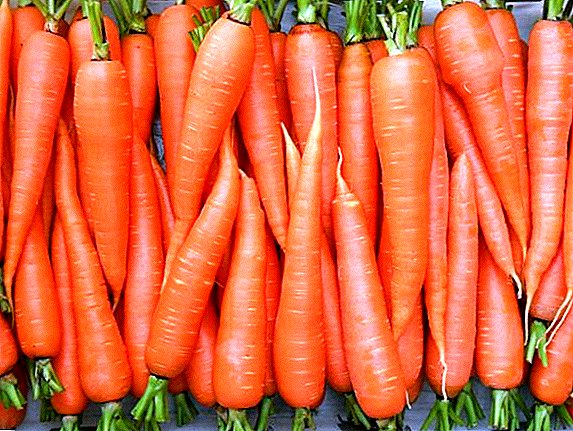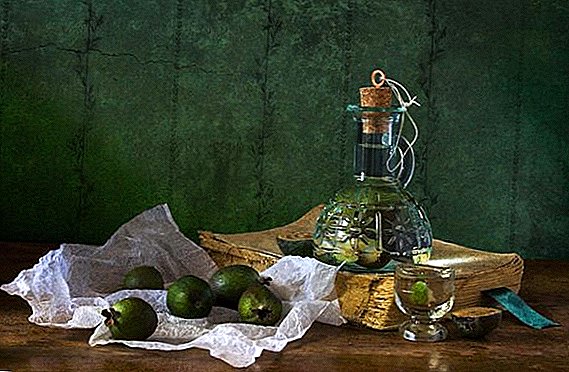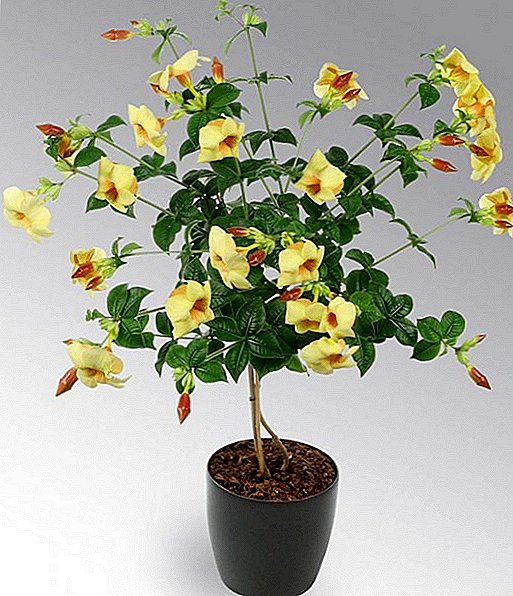 It is difficult not to pay attention to the beautiful climbing bush, which has quite long shoots. This is allamanda.
It is difficult not to pay attention to the beautiful climbing bush, which has quite long shoots. This is allamanda.
Especially beautiful are plants that live in the natural environment. And although the culture grown in artificial conditions, can not also curl, but it looks no less attractive.
Botanical description of the plant
The culture is named after the professor at the University of Leiden, Frederick Allamand. The natural habitat for it is the tropics of South America, mainly Brazilian lands. It is a perennial evergreen culture of the Kutrovye family.
Allamand grows in the form of trees, bushes, lianas. In height reaches from 2 to 10 meters. Thin shoots are flexible. Most of the species representatives have significant in size tubular fragrant flowers of yellow, purple, crimson, coral shades. Each of the flowers has the form of a drop-down bud, consists of five petals weakly protruded by a wider portion.

All of them are collected in large inflorescences. In the opened form, their sizes are up to 12 cm. After flowering, in place of flowers, thorny fruits are arranged in the form of boxes filled with a large number of seeds. Oval leaves of plants are placed in pairs, have a pointed tip, differ in smoothness and richness of luxurious green color with a brilliant oily effect.
Allamanda blooms all summer and autumn. With proper care, abundant blooms repeat from year to year. The culture is perfect for growing conditions of winter gardens and greenhouses with tremendous spatial possibilities and considerable humidity. It is not so easy to grow allamandu in living quarters.
Important! When growing allamanda, it is necessary to make it a rule to be extremely careful in caring for plants, because all its parts are poisonous. Milky juice culture can cause irritation of the skin and eyes.
Varieties of allamanda
There are approximately 15 varieties of allamanda.
The most famous are:
- laxative - the type of allamand most common in the home. It got its name because of the irritating effects on the body of the plant parts as a result of their ingestion. Outwardly, this is a beautiful climbing fast-growing plant, capable of reaching six meters in length and more. Petals can have different shades of yellow and color saturation;

- purple - one of the most slowly growing species. Her leaves are slightly pubescent, collected in sockets of 4 things. Flower petals can be from pale lilac to deep purple hues. They are often located at the top of the vine;

- oleandrolist - shrub with neskuschimi branches up to 1 meter in height. The upper part of the leaves has a bright green color, the bottom - light. Flowers of yellow color are thickened from below and slightly smaller than those of allamandi-lianas. They open up to 4 cm;
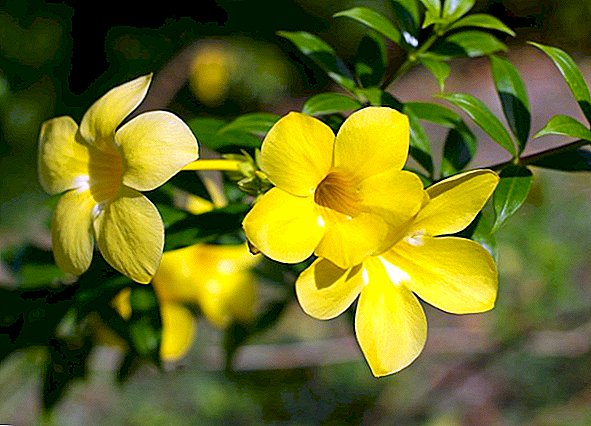
- yellow terry - a common species, so named because of the velvety flower petals. The culture grows in the form of a shrub with a height of no more than 90 cm with no shoots. Pointed oval leaves up to 12 centimeters in length have short petioles. Flowers are placed on elongated pedicels;
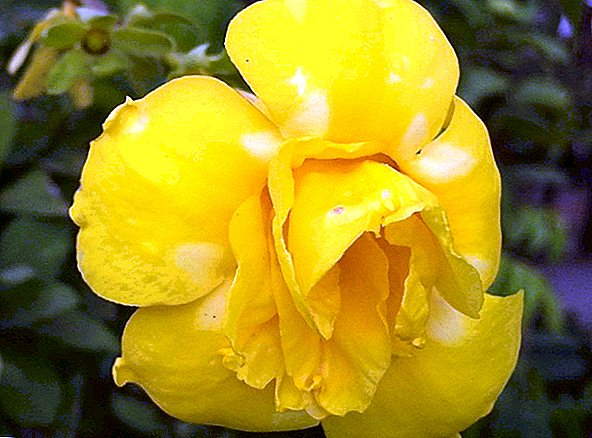
- noble - a curly appearance, whose shoots are distinguished by a reddish tint. Yellow flowers are distinguished by the presence of white specks and an amazing smell;
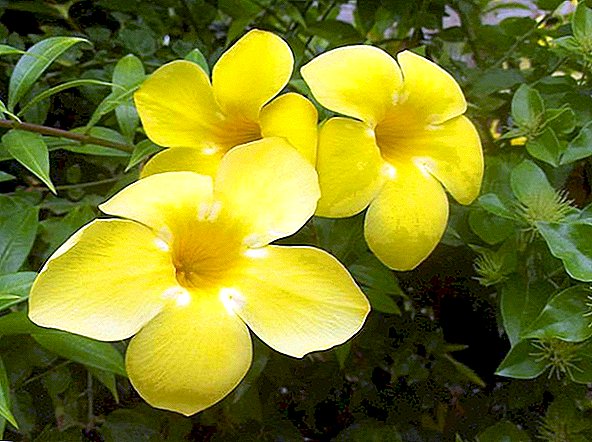
- grandiflora - a type of evergreen climbing Allamand with flowers of beautiful saturated lemon color up to 10 cm in size. The leaves are oblong ovate;
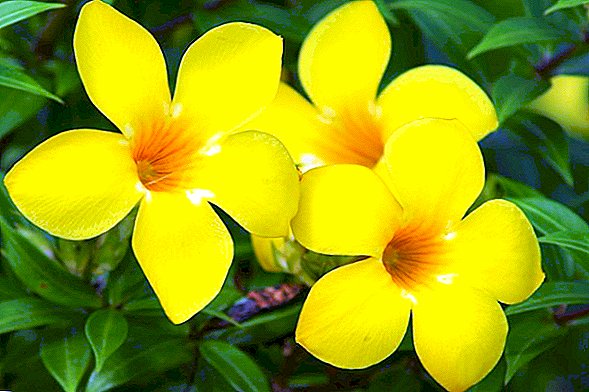
- Shota - a type of evergreen fast-growing climbing Allamand, having slightly lowered shoots, covered with a reddish-skinned skin. The leaves are wide, oval, dark green in color, going to 3-4 leaflets. The flowers are large, rich yellow with brownish lines.
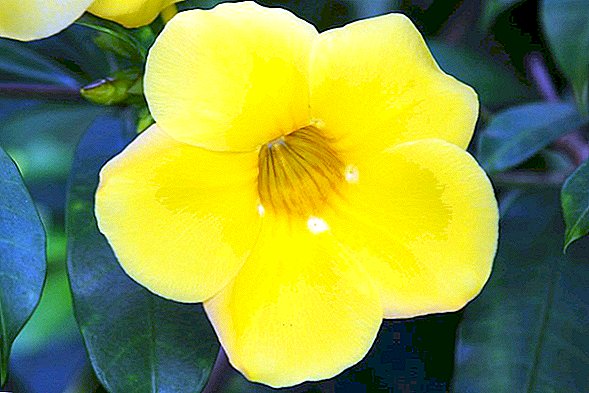
Conditions for growing at home
It is better to keep the culture in greenhouses or large winter gardens with a temperature regime not lower than +18 degrees. At first, the plant may well feel itself in a residential area, but as it grows up, it should still be moved to a greenhouse or a winter garden. For allamand, lighting, air humidity and temperature are of particular importance.
Did you know? With seasonal or weather coolness, rain, at the end of summer or early autumn, Allamanda begins to behave quite interestingly - her flowers become a darker saturated color.
Location and lighting
Allamanda is committed to as much light as possible, so she will feel most comfortable in the south, southeast and southwest. But in a particularly hot period, plants should be protected from direct sunlight, more than 4 hours a day. In winter, allamand should provide additional artificial lighting.

Temperature conditions
The optimum temperature is:
- in summer - from +20 to +24 degrees;
- in winter - from +15 to +18 degrees.
Important! Allamand absolutely does not recognize sub-zero temperatures. Only a short-term temperature regime within + 1 ... +2 degrees is able to transfer. When frost culture dies immediately.
Air humidity
Allamand needs high humidity. This figure should be at least 60-70 percent. Systematic spraying with soft, not cold water will help maintain this level. Also stabilize the moisture content of the plant on the pallet with a moist layer of sphagnum, expanded clay, sand, pebbles.
Home care
It is quite difficult for Allamanda to grow at home, as she puts forward significant care requirements.

Watering rules
Allamand loves moisture.
But the frequency of its watering depends on the season:
- In the summer, water should be plentiful, so that the soil does not have the ability to dry, but it is also not worth pouring;
- in winter, watering should be reduced, it should become more moderate, so that the top layer of soil has time to dry out.
Important! During the flowering period, water during spraying should not fall on the flowers in order to avoid the formation of dark spots on the petals.
Top dressing
In the summer and spring, during the growing season and flowering fertilizers should be carried out once or twice a month. Best of all are suitable for these purposes complex top dressing for houseplants. The alternate use of mineral and organic complexes is also the optimal solution.
Pruning
Allamandas are cut to achieve several goals:
- restrictions on the length of their growth;
- more copious leaf cover;
- increasing the number of flowers and luxurious flowering.

Pruning should be done either at the end of winter - early spring before flowering, or at the end of autumn after the flowering stops. Crop should be a third or half the length of the branches. The cut must be above the nodes of the leaves with growth points. Weak and over-thick shoots should be removed. If necessary, hold nip young shoots. Culture is well formed, so even from a bush of a rapidly growing and strongly growing allamanda you can make a real handsome man. For this, a special support can also be used.
Transfer
Allamandu should be transplanted at a mature age once every two to three years, at a young age every year. It is recommended to carry out transplantation in the spring to activate growth. In order to limit height growth from a tank with a diameter of 20 cm, the plant can no longer be replanted, shortening only its roots and adding fresh soil.
The size of the capacity for transplantation depends on the variety of allamand: for fast-growing, it is better to use “for growth”, with a reserve, for slow-growing, the height of the pots can be equal to half the length of the plant. Landing container must have a drain hole. A drainage layer of expanded clay or pebbles is placed on the bottom, then a soil mixture, the roots of the plant are placed on it, sprinkled with the remaining earth and compacted. Support for climbing is necessary.
Important! The newly purchased Allamand should be transplanted no sooner than after a 14-day quarantine, which allows identifying the existing problems of the new plant (disease, pests) and adapting it to the changed conditions. This period will help to determine and choose the right capacity for transplantation.
To ensure the productive growth and flowering of allamanda, low acid soil, characterized by nutritional value, friability, neutrality, is optimally suited. It can be prepared from leaf, sod land, peat, humus and sand in a ratio of 4: 2: 2: 2: 1 or from sod, leaf earth, humus and sand in a ratio of 2: 1: 1: 1.
Breeding
Allamanda breeds in seed and vegetative way.

Cuttings
Propagation by cuttings occurs in several stages:
- At the end of winter - with the advent of spring, half-woody cuttings are cut, their length is from 8 to 10 cm.
- From the bottom, the formed sections will not be superfluous to process with a growth stimulator (Zircon, Kornevin, Heteroauxin, succinic acid solution).
- The cuttings are planted in moistened sand, which is better slightly heated from the bottom.
- Cover seedlings with plastic wrap or other transparent device providing diffused illumination.
- To conduct regular airing and spraying, maintaining the optimum level of humidity, and temperature conditions at the level of + 23 ... +25 degrees.
- When the first leaves appear, indicating that rooting was successful, the cutting can be transplanted into nutrient soil.
- After one or two months there will be a full development of young Allamand.
Important! Allamand refers to plants that can effectively take root in the water, especially when adding a root stimulator.
Seeds
Seed propagation features:

- At the end of February or with the onset of March, allamand seeds can be sown.
- Pre-sowing material is treated with a weak solution of potassium permanganate, washed and dried.
- Seeds are sown in a moist soil consisting of sand and peat in equal shares, at a distance of 3 to 5 cm, sprinkled with a layer of soil of 0.5 cm.
- The cover is provided with a polyethylene or other transparent material.
- Periodically air and spray.
- Maintain the temperature regime at + 22 ... +25 degrees.
- After 4-6 weeks should appear the first shoots.
- Then you should gradually accustom the seedlings to existence without shelter.
- After the appearance of several leaves, the seedlings swoop and gradually transplant into separate containers with a more nutritious soil mixture.
Did you know? Amazingly beautiful two-color liana can be obtained from grafting purple allamanda to yellow.
Diseases and pests
The process of growing allamand has many nuances and peculiarities, non-observance of which can lead to the occurrence of diseases:
- leaves curl and turn brown - The result of excess moisture or hypothermia. It is necessary to take measures to regulate irrigation and temperature conditions;
- leaves turn yellow - lack of lighting and nutrients. For the same reason, plants bloom badly. Providing optimal access of light and mineral fertilizer will help to cope with the problem;
- shoots are drawn, the leaves turn pale - the reason is the lack of light and nutrients. It is necessary to organize additional lighting and feeding plants;
- the stems at the base begin to turn black and rot - occurs due to crowding when planting and overmoistening with decreasing temperature. To eliminate the problem, healthy plants are deposited, further watering is carried out with the addition of a fungicide, the destroyed specimens are destroyed.
Did you know? Allamand proved to be an effective medicinal plant with an antibacterial effect on staphylococcal microorganisms. Helps to avoid complications of malaria, jaundice, struggling with an enlarged spleen.
Among the pests, the most annoying and dangerous for Allamand are nematodes, aphids, spider mites, whiteflies.
To combat them, the following measures should be taken:
- transplant the plant to a new place;
- to treat the soil and culture with insecticidal preparations.
Difficulty growing
Very rarely, the process of growing allamand runs smoothly, often with its occurrence some problems arise. Of particular concern is the soreness of the culture that occurs when improper care of plants. To avoid such manifestations, you need to properly carry out watering, fertilizing, to comply with the optimal heat and light regimes.

Also, when taking care of allamanda, one should not forget about the poisonous inclinations of the culture, therefore, precautions should be observed:
- after transplanting, trimming the plant hands must be washed with soap;
- it is unacceptable to work in open clothes so that the juice does not accidentally hit the skin;
- Do not place the plants so that they are accessible to children.
Pay attention to the indoor brigamia flower.
Allamanda is a rather capricious culture, which can not be grown by every gardener. But strict adherence to the rules and recommendations for planting, growing and caring will help to achieve success in this matter. And the amazing beauty and unique aroma of a flower will be a well-deserved reward for a skilled florist.










